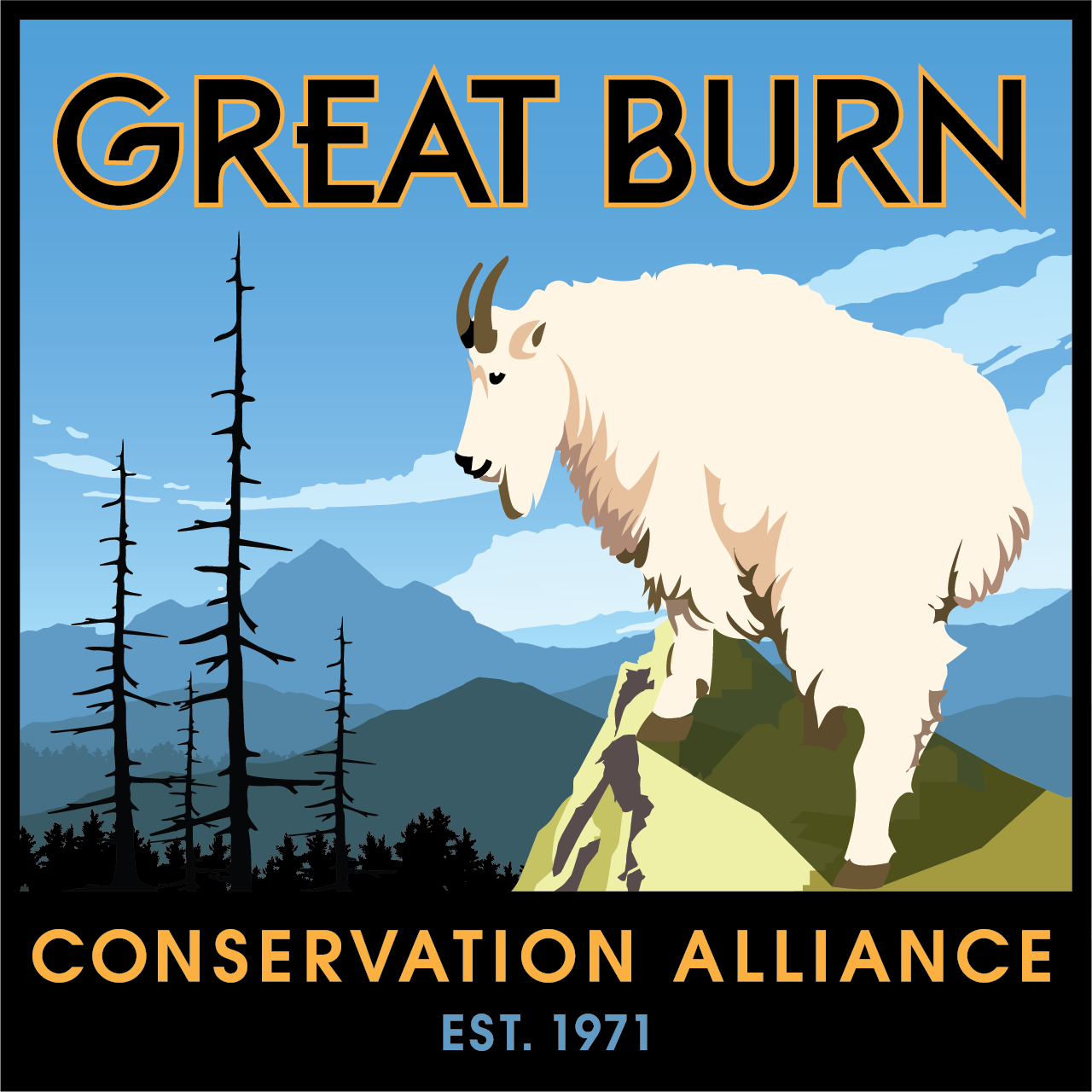By now, you’ve probably seen the headlines: the Trump administration has announced plans to roll back the 2001 Roadless Rule. But what does that actually mean? And more importantly, what does it mean for the Great Burn ecosystem and the wild public lands we work to protect?
What Is the Roadless Rule?
Originally established in 2001, the Roadless Rule was designed to protect 58.5 million acres of undeveloped national forest lands from new road construction and logging. It has faced more than a decade of legal challenges—and survived. Now the Trump administration argues that the rule is overly restrictive and hinders wildfire prevention and timber production.
While the rule does include some exceptions (like timber harvest to address community fire risk or to improve habitat for endangered species), it has largely helped preserve the ecological integrity of these Roadless Areas and prevented industrial development from fragmenting them further.
What Are Roadless Areas?
Roadless areas are exactly what they sound like—large, undeveloped tracts of public land without roads. In the Great Burn mission area alone, there are 27 named roadless areas, covering about 1.3 million acres, larger than the state of Delaware.
Roadless Areas are wild, intact, and ecologically vital. Two of the most iconic wildlands in the Great Burn ecosystem—the Great Burn and Mallard Larkins proposed wilderness areas—are roadless. These areas are managed with the highest level of protection, while others are guided by a range of recreational and conservation prescriptions.
Old growth cedar trees are common in many of the roadless areas along the Idaho/Montana stateline. These trees could be at risk if roadless rule protections are removed. Photo courtesy of Sofie Vernholm.
What’s Happening Now?
The USDA recently announced its intent to rescind the Roadless Rule. As of now, this is only a proposal. In order to actually rescind the rule, there will have to be a formal reverse rulemaking process with public notice, public comment periods (hopefully), environmental review, and likely litigation. This change will have a huge impact on conservation throughout most of the United States, however, a few states, including Idaho, have their own version’s of the Roadless Rule that will not be affected by the change.
What About Idaho?
Idaho is unique—alongside Alaska and Colorado, it has its own state-specific roadless rule. For now, this state rule remains in place, meaning Idaho’s 9.3 million acres of roadless land is temporarily shielded from national-level changes.
That said, pressure will build for Idaho to follow the federal government and revise or rescind its rule. How Idaho’s leadership, particularly Senator Jim Risch (who helped champion the original Idaho rule), responds will be key.
What’s at Stake in the Great Burn?
In short: everything.
The Great Burn Conservation Alliance works in an area that includes 27 inventoried roadless areas. These lands form the ecological backbone of the region. They are home to clean, free-flowing streams, provide critical wildlife habitat and serve as migration corridors for species like lynx, wolverine, grizzlies, and bull trout.
Rolling back the Roadless Rule is not just a bureaucratic move—it’s a direct threat to the integrity of the Great Burn ecosystem.
Courtesy Sofie Vernholm.
What Can We Do?
This moment calls for action—not just from conservation organizations, but from everyone who loves and uses public lands.
Here’s how you can help:
Contact your representatives: Tell them why roadless areas matter to you. Personal stories make a difference. How do you use these places? What would be lost if protections were removed?
Speak up for the Lolo Forest Management Plan: Right now, the Lolo National Forest is revising its management plan. The Draft Environmental Statement is scheduled for release in late 2025. Strong language and durable protections for roadless areas in the plan can help insulate our lands from national-level rollbacks. You can sign up for planning updates and meetings HERE.
Spread the word: Educate your community about what’s happening. Many people assume roadless areas are already protected forever—they’re not.
Why Roadless Areas Matter
These lands aren’t just scenic backdrops—they’re living systems that store carbon, filter drinking water, and protect biodiversity. Much of our clean water starts in roadless areas. Their value—ecological, cultural, and recreational—is immense.
At the Great Burn Conservation Alliance, we’ve long fought to keep these areas intact and build support for permanent wilderness designation. This latest challenge only strengthens our resolve.
Want to stay informed or get involved?
Join our newsletter, volunteer on stewardship trip, or donate to help support our work in the Great Burn and beyond.
Together, we can keep these places wild.



